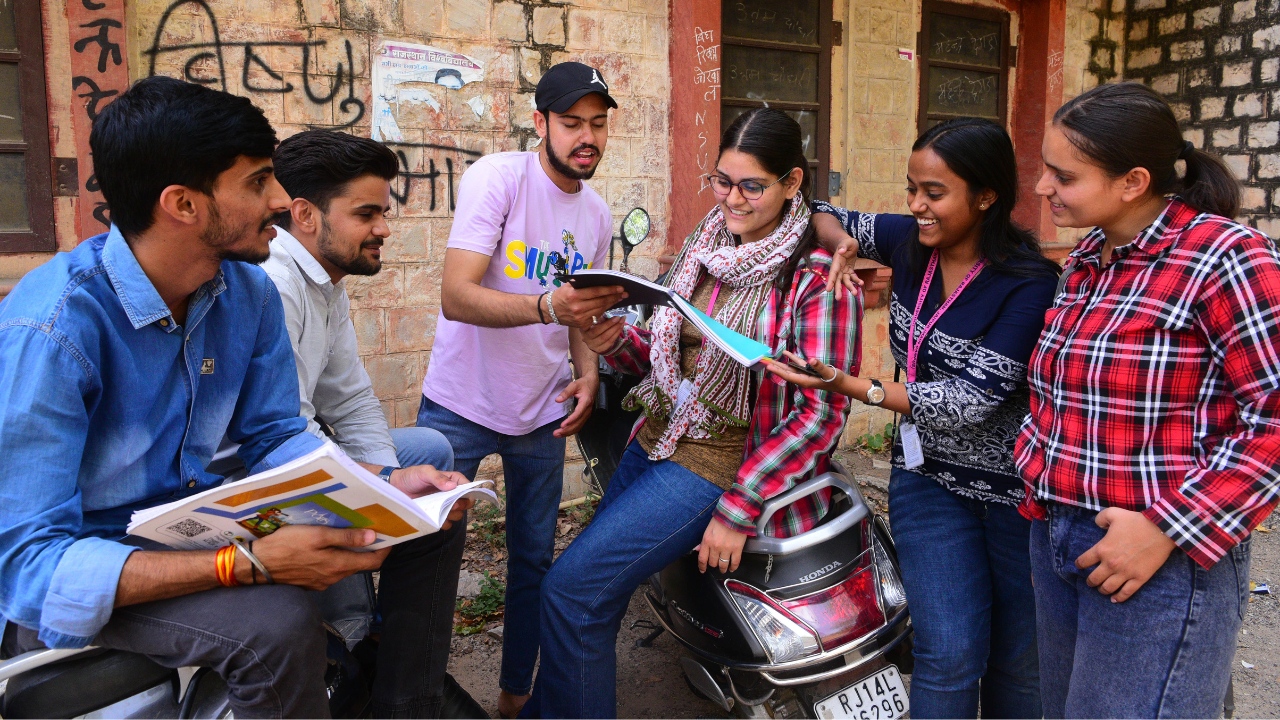[ad_1]
NEW DELHI: Higher education institutions (HEIs) in India will no longer receive grades during the accreditation process. Instead, they will be categorized “as either accredited or not accredited.” Moreover, the accreditation authority/ies will use “Maturity-Based Graded Accreditation (Level 1 to 5) to encourage accredited institutions to raise their bar to achieve the highest level of 5 which is “Institutions of Global Excellence for Multi-Disciplinary Research and Education.”
The National Education Policy 2020 set a target of 50% Gross Enrolment Ratio by 2035, for which the ministry of education (MoE) constituted a committee headed by K Radhakrishnan, former chairman of ISRO and chairperson, Standing Committee of IIT Council in November 2022 to propose transformative reforms for strengthening assessment and accreditation. The committee, following public consultation, presented its final report to union education minister Dharmendra Pradhan on Jan 16.
According to a senior official with MoE, the committee recommended a set of transformative reforms to strengthen the periodic approval, assessment and accreditation, and ranking of Indian HEIs. The recommendation also focuses on mentoring and incentivizing schemes for raising their participation as well as accreditation levels.
The highlight of the new process is to implement “binary accreditation” which is in line with the best practices followed by many globally, wherein institutions will not be granted grades as is the practice now, but will simply be mentioned as “accredited or not accredited.”
For accredited HEIs a “Maturity-Based Graded Accreditation” will be followed wherein they will be levelled between 1 and 5. “This is to motivate the accredited HEIs to continuously improve, evolve in-depth or in-breadth in disciplines to a higher level (Level 1 to 4 as Institutions of National Excellence, and then to Level-5),” said the official.
As per the recommendations, the metrics for Binary and Maturity-Based Graded Accreditation focusses on processes, outcomes and impact across different attributes of HEIs (instead of mere input-centric). The new process shall consider the heterogeneity of HEIs in the country, categorize them based on their orientation/vision and heritage/ legacy, and then seek information from the HEIs that are appropriate for their category rather than a one-size-fits-all model. There will be a special focus on rural and remote location institutions through mentoring and handholding.”
A new “One Nation One Data Platform” has also been proposed to ensure integrity and transparency in handling institutional data collected for varied purposes like approval, accreditation, and ranking, with an in-built design for collateral cross-checking of authenticity of data. Additionally, to enhance the validity and reliability of the data “Stakeholder validation” has been proposed to integrate stakeholders as part of the accreditation and ranking process.
The executive committee of the National Assessment and Accreditation Council adopted the reforms in its meeting on Saturday to be implemented in two-stages – Binary accreditation in the next four months, followed by Maturity based Graded levels by December 2024.
The National Education Policy 2020 set a target of 50% Gross Enrolment Ratio by 2035, for which the ministry of education (MoE) constituted a committee headed by K Radhakrishnan, former chairman of ISRO and chairperson, Standing Committee of IIT Council in November 2022 to propose transformative reforms for strengthening assessment and accreditation. The committee, following public consultation, presented its final report to union education minister Dharmendra Pradhan on Jan 16.
According to a senior official with MoE, the committee recommended a set of transformative reforms to strengthen the periodic approval, assessment and accreditation, and ranking of Indian HEIs. The recommendation also focuses on mentoring and incentivizing schemes for raising their participation as well as accreditation levels.
The highlight of the new process is to implement “binary accreditation” which is in line with the best practices followed by many globally, wherein institutions will not be granted grades as is the practice now, but will simply be mentioned as “accredited or not accredited.”
For accredited HEIs a “Maturity-Based Graded Accreditation” will be followed wherein they will be levelled between 1 and 5. “This is to motivate the accredited HEIs to continuously improve, evolve in-depth or in-breadth in disciplines to a higher level (Level 1 to 4 as Institutions of National Excellence, and then to Level-5),” said the official.
As per the recommendations, the metrics for Binary and Maturity-Based Graded Accreditation focusses on processes, outcomes and impact across different attributes of HEIs (instead of mere input-centric). The new process shall consider the heterogeneity of HEIs in the country, categorize them based on their orientation/vision and heritage/ legacy, and then seek information from the HEIs that are appropriate for their category rather than a one-size-fits-all model. There will be a special focus on rural and remote location institutions through mentoring and handholding.”
A new “One Nation One Data Platform” has also been proposed to ensure integrity and transparency in handling institutional data collected for varied purposes like approval, accreditation, and ranking, with an in-built design for collateral cross-checking of authenticity of data. Additionally, to enhance the validity and reliability of the data “Stakeholder validation” has been proposed to integrate stakeholders as part of the accreditation and ranking process.
The executive committee of the National Assessment and Accreditation Council adopted the reforms in its meeting on Saturday to be implemented in two-stages – Binary accreditation in the next four months, followed by Maturity based Graded levels by December 2024.
[ad_2]
Source link


